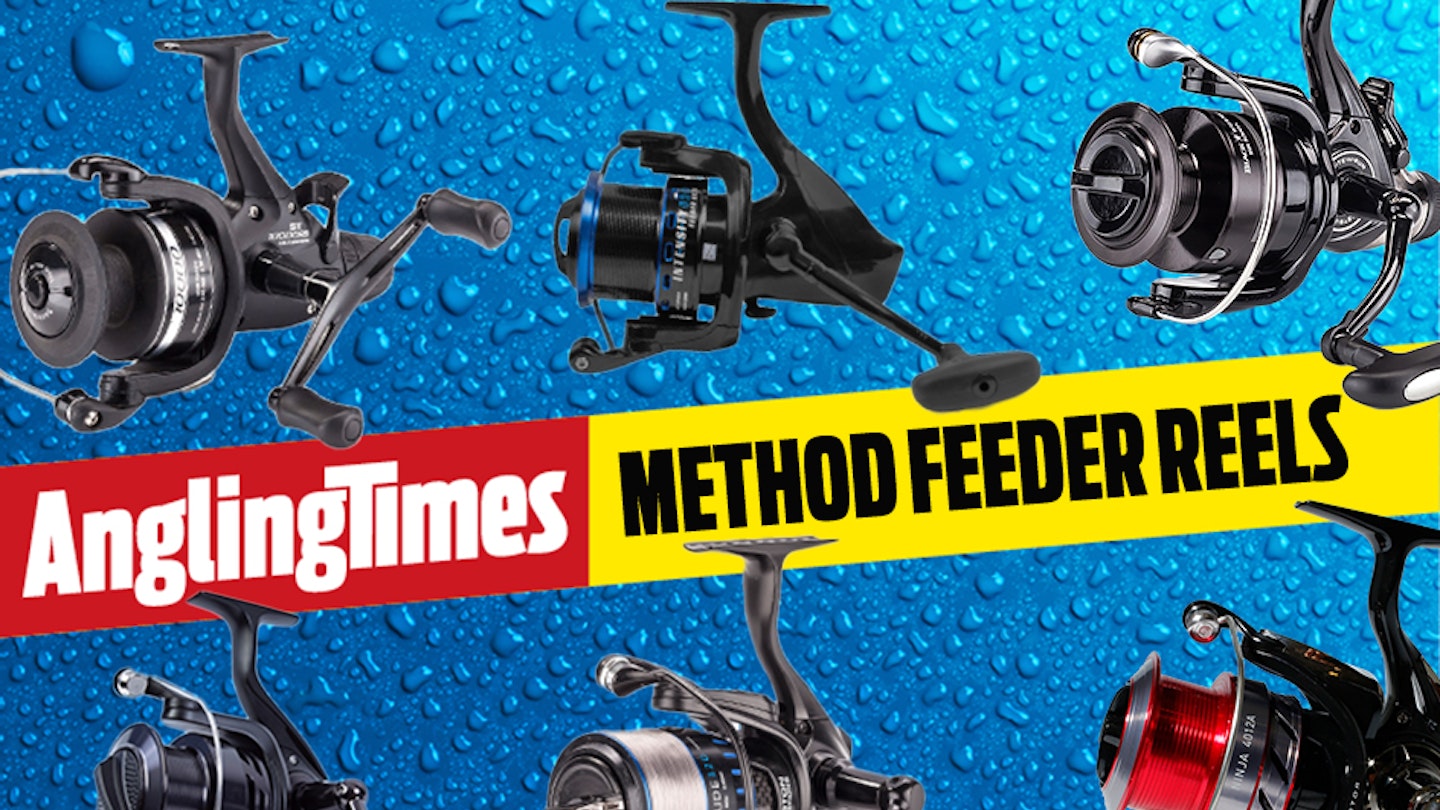The best method feeder fishing reel needs plenty of winding power to cope with weighty feeders and frequent casting. They also need to be robust and have a strong enough clutch to deal with the fish you will often be hooking on the Method - and that's carp!
Fishing the method feeder can put a lot of strain on your tackle, generally frequent casts are required, which means lots of reeling in too. Not only this but when you get a bite, they tend to be savage often pulling the rod in and as you maybe fishing upto an island, the best reels for method feeder fishing need to have lots of cranking power to steer those fish away from snags and into your net.
The best reels for method feeder fishing at a glance:
• Best budget reel for method feeder fishing: Nytro NTR Fishing Reel - View offer on Total Fishing Tackle
• Best for distance casting: Preston Innovations Intensity 620 Feeder Reel - View offer on Total Fishing Tackle
• Best mini baitrunner: Shimano Baitrunner ST 10000RB - View offer on Go Outdoors
• Best reel for method feeder fishing all-rounder: Daiwa Ninja Match and Feeder 4012 - View offer on Fishing Tackle and Bait
Using a method feeder can be exciting, and some days, when the fish are really feeding well, you won't have to wait more than a few seconds for a bite. It does work better the more active you are, so keep recasting to get the bait into the swim and the fish will respond. Make sure you use a reel line of around 8-10lb to ensure those big carp are landed safely. The reels in this list all have the required power to fish a method feeder with ease, so take a look at some of the best method feeder fishing reels here...
Best for distance casting
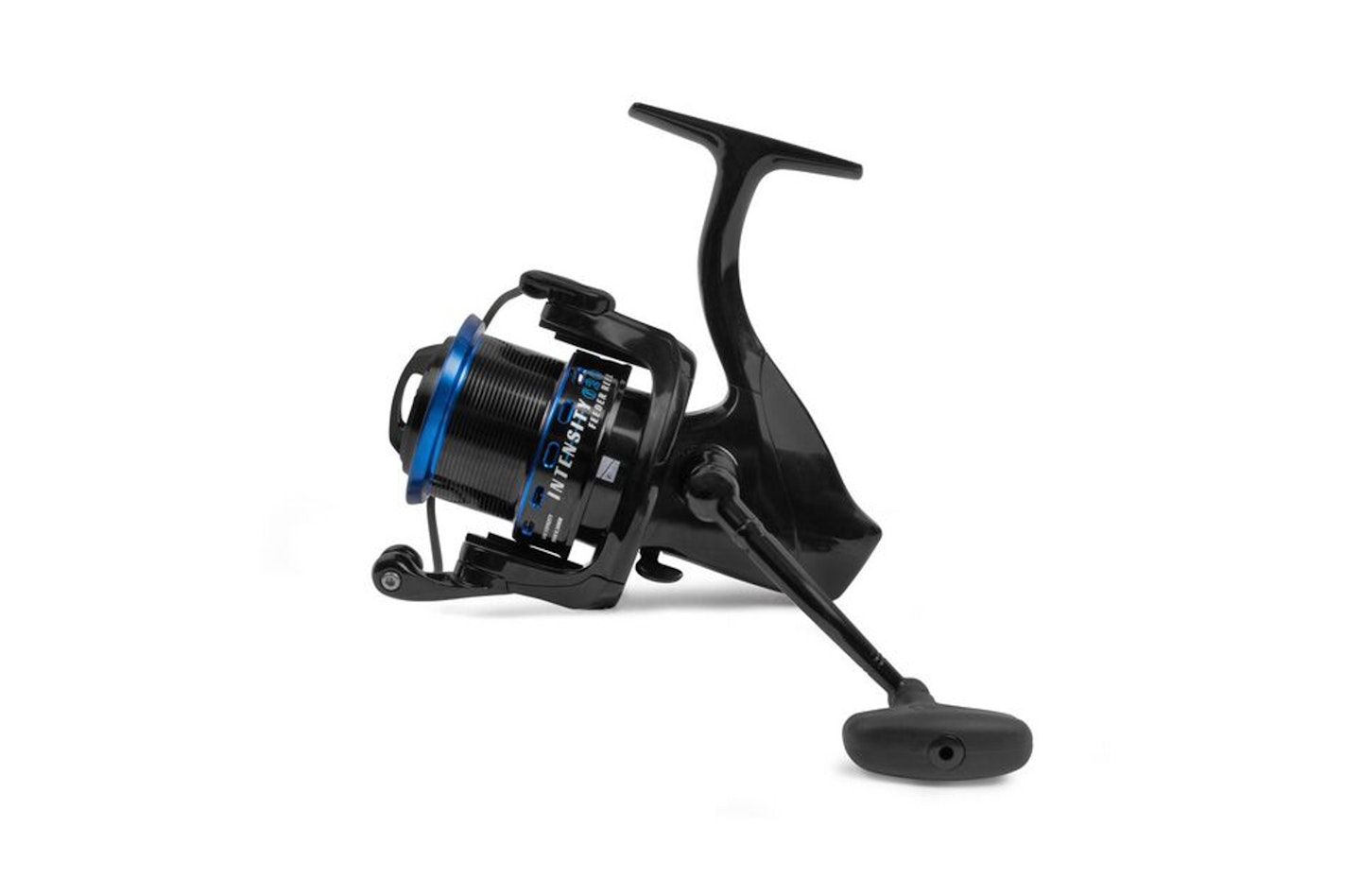
www.total-fishing-tackle.com
With plenty of winding power to retrieve the heaviest of feeders, the 620 is the smaller of the two Intensity models, and much easier to handle on a normal length Method feeder rod than its larger 720 stablemate.
The Preston Intensity 620 Feeder Reel features include a super-strong aluminium spool, a light, tough body and super-reliable worm drive gearing. Its SDS (Speed Drag System) lets you instantly set the tension after casting.
Pros
- Awesome drag system.
- Light in the hand.
Cons
- Bail arm is a bit chunky
Most reliable freespool
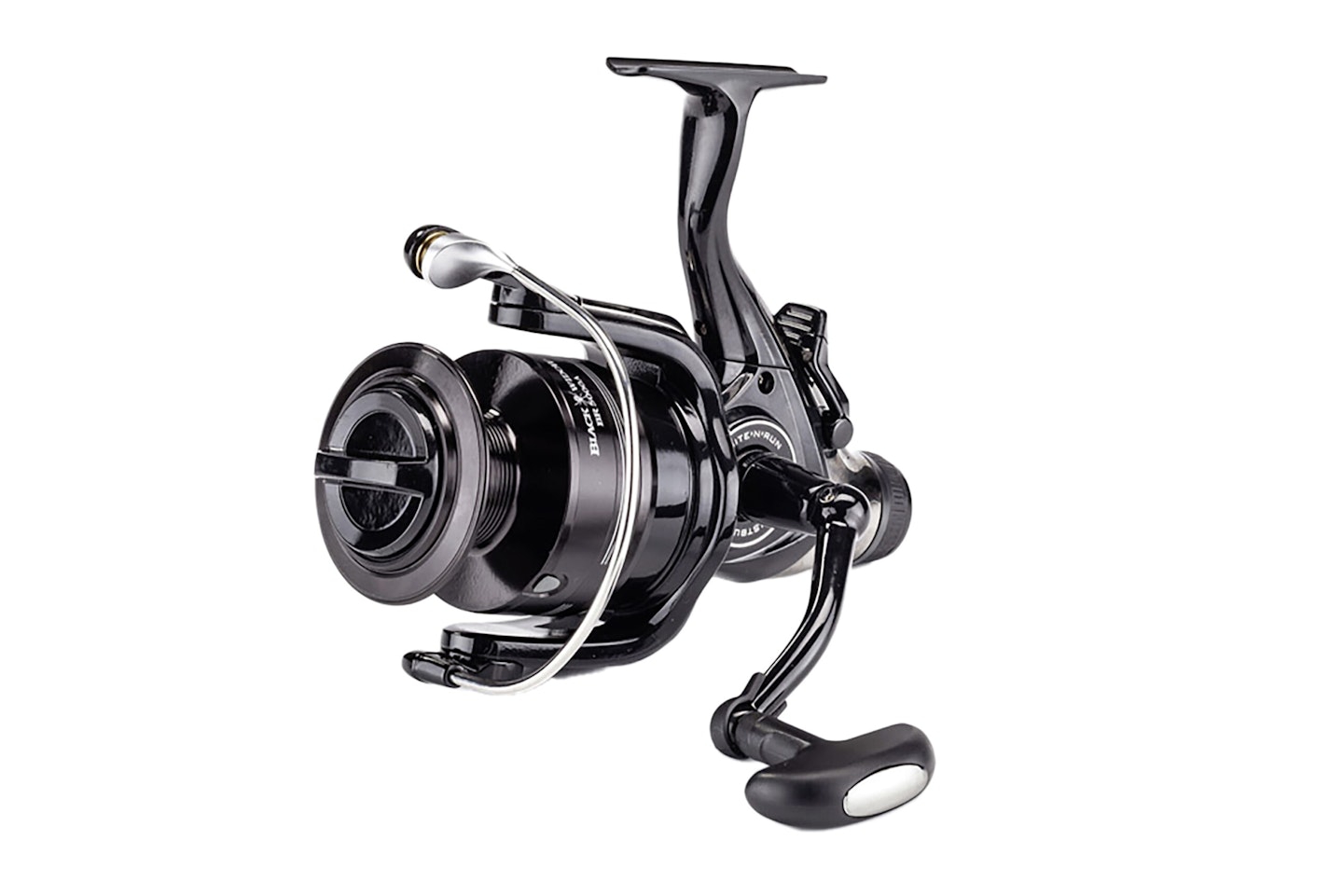
www.fishingrepublic.co.uk
Currently, the cheapest reel in Daiwa’s freespool range, but still a quality offering, Daiwa’s Black Widow comes in a choice of four body sizes from 3500 to 5000.
All except the largest size Daiwa Black Widow BR reels are ideal for Method feeder work. Smooth and reliable, the Black Widow has many Daiwa features such as Airbail, Twistbuster, and BR freespool mechanism.
Pros
- Smooth mechanics.
- Good value.
Cons
- Can be a bit bulky in larger sizes for smaller rods.
Best method reel under £50
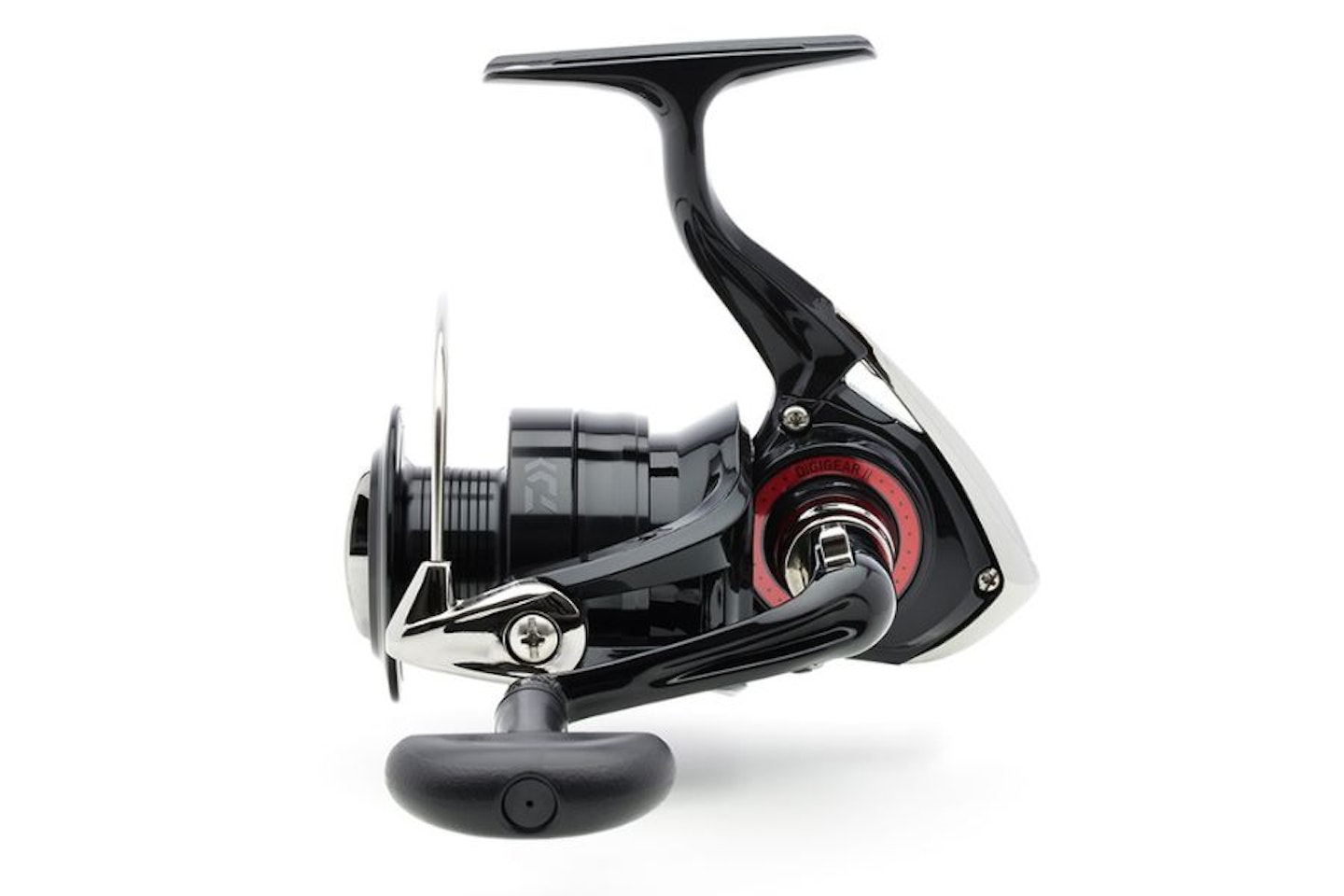
www.total-fishing-tackle.com
The Daiwa 23 Matchman Reel is a very impressive item of tackle, it's really hard to believe you will get the reel and change from £50. The range covers three sizes, including a 2500 model, which is compact and great for lure fishing or light float work, it is also great for kids or beginners.
The 3000 size is the most versatile in the range. It is absolutely perfect for chucking a Method Feeder on small commercials or more traditional feeder fishing tactics when using smaller rods.
If you were just looking for a feeder reel to target a bigger commercial or natural venue the 4000 is definitely the size to go for, as it just has that extra power you'll need. It also has a retrieval rate of 95cm per turn, so you'll have those feeders back in and back out in no time.
Pros
- Great range of reels for all styles of angling.
- 4000 model ideal for any feeder fishing.
Cons
- No spare spool.
Best mini baitrunner
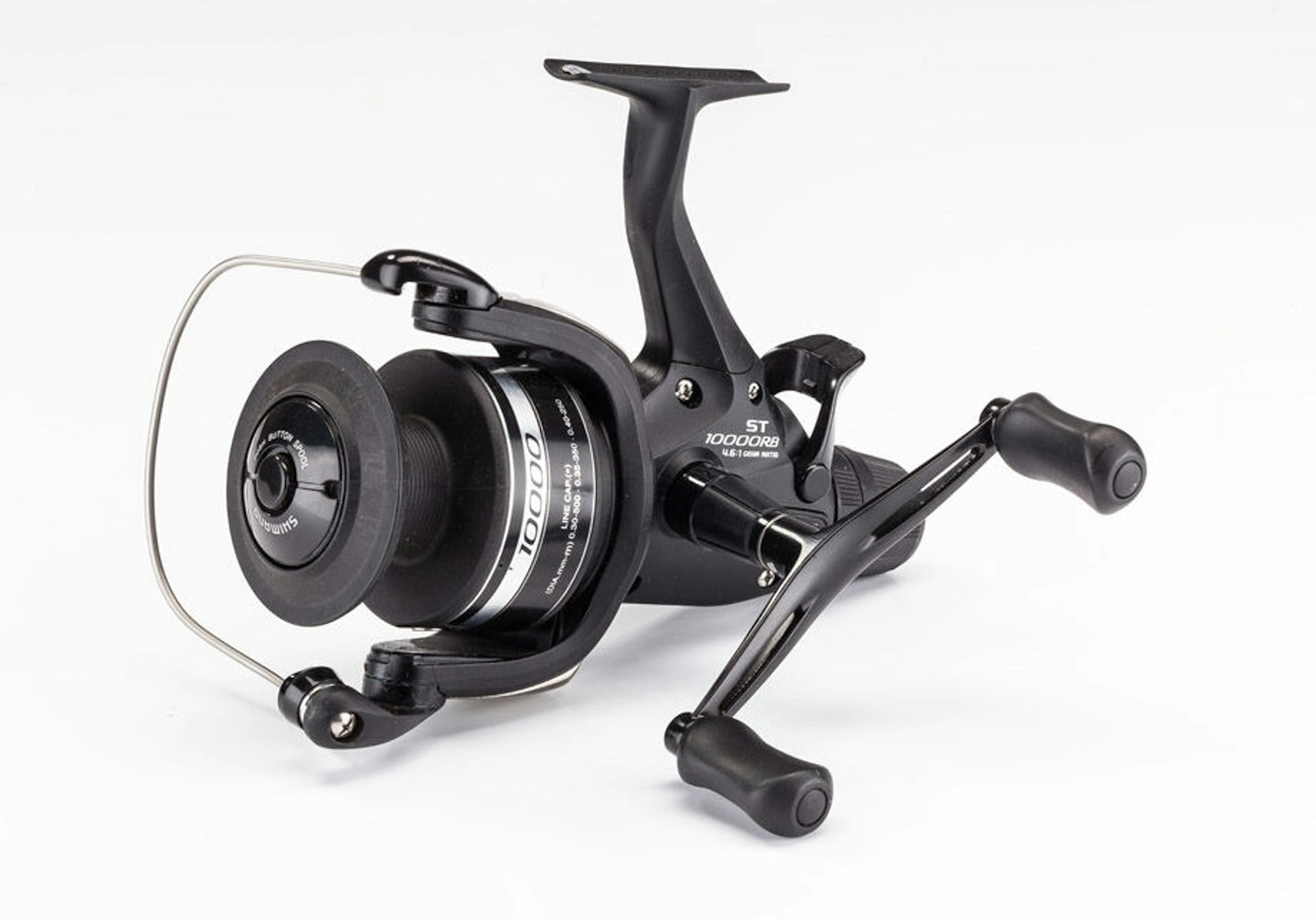
www.gooutdoors.co.uk
This genuine Shimano Baitrunner in a 6000 body size has it all – at a fabulously low price.
The faultless Baitrunner system on the Shimano Baitrunner 10000RB is ideal for violent takes, as it can be set to release line the instant you get a bite, under a slight tension or virtually free-running, depending on angling conditions.
Key features include a distinctive double handle grip with a perfect balance, plus a sturdy, sleek and lightweight body, that houses a sturdy die-cast gearing system.
Pros
- Superb Baitrunner system.
- Comfortable double handle.
Cons
- A bit large for smaller Method rods.
Best reel for method feeder fishing all-rounder
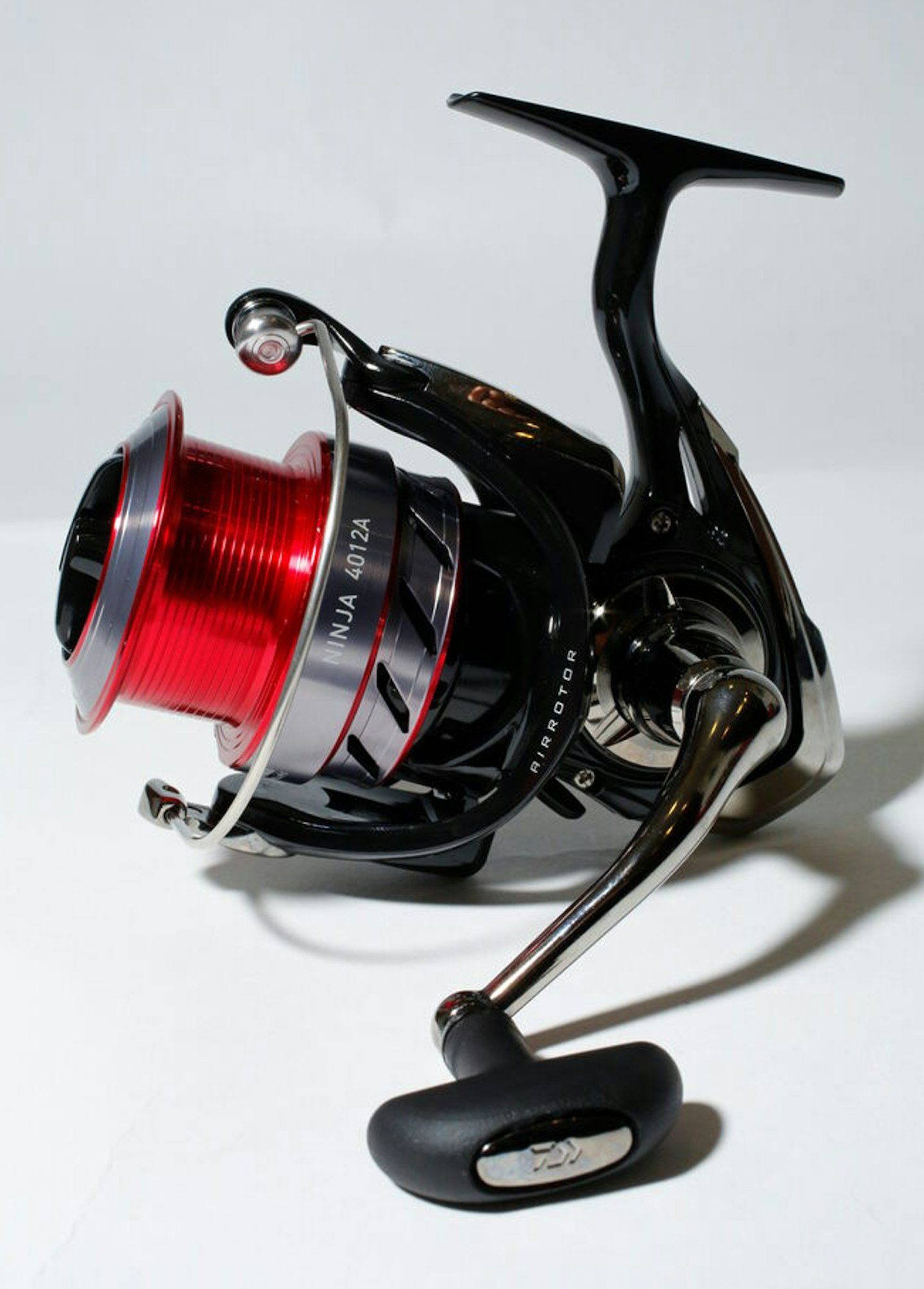
www.fishingtackleandbait.co.uk
This cool-looking Ninja reel is a single-handled model that can cope very easily with the rigours of day-to-day Method feeder work.
Feature-packed, the Daiwa Ninja boasts a lightweight graphite body, Twistbuster line management system, and a geared-down retrieve rate for even higher winding power.
Pros
- A fantastic all-round reel.
- Great retrieve rate.
Cons
- Not the highest line capacity.
Most powerful all-rounder
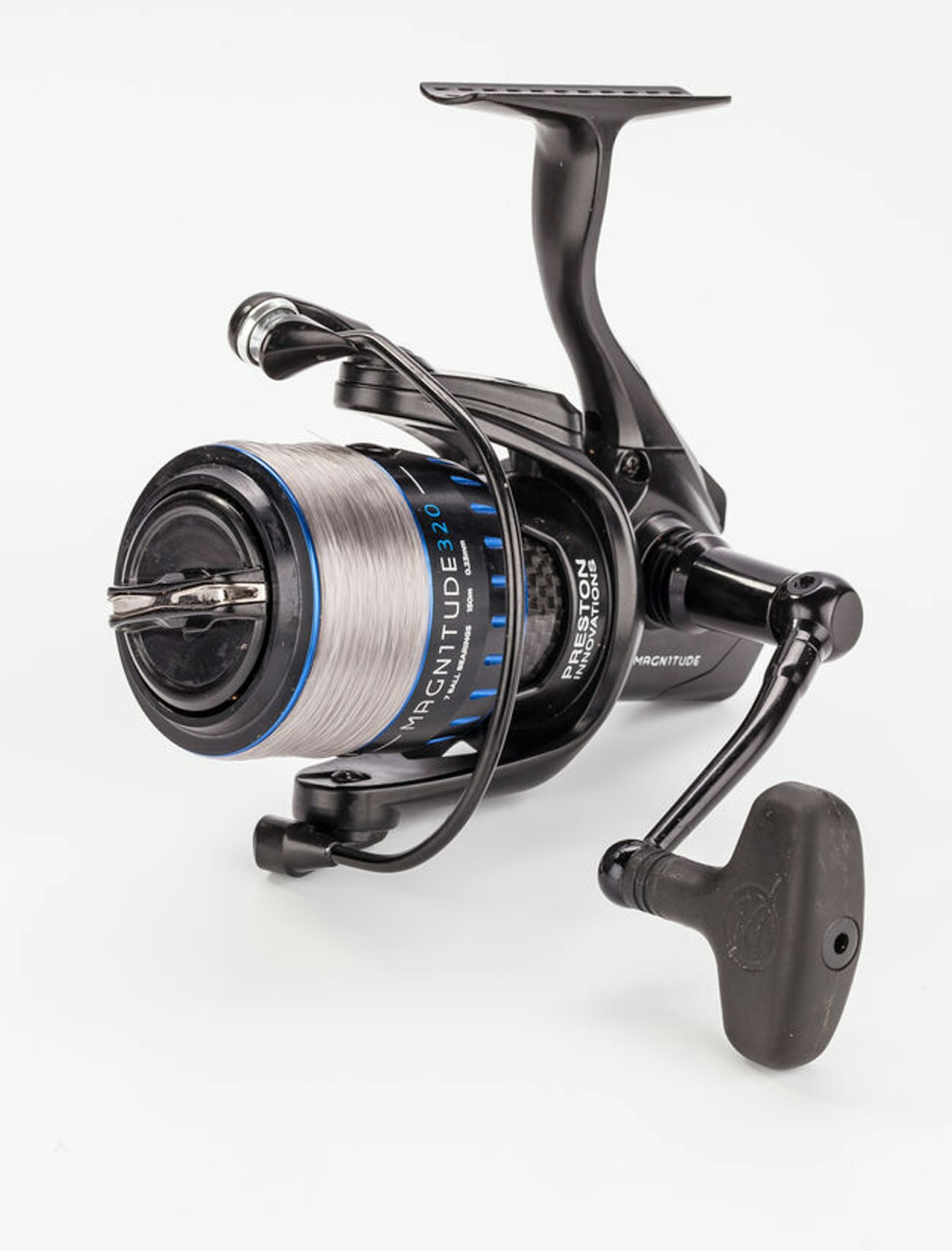
www.fishingtackleandbait.co.uk
The Preston Magnitude is the ideal reel for Method feeder fishing thanks to a host of brilliant features and is available in a range of sizes from 320 to 620, with the 520 being a great choice on big waters.
Loaded up with 6lb or 8lb mainline this reel holds around 125m, more than enough for most feeder situations. Slow oscillation provides a perfect straight up-and-down line lay allowing for long, smooth casts when called for. Plenty of winding power comes via sturdy worm drive gearing.
Other key features ideal for Method feeder work include a quick 5.0:1 gear ratio and a dual line clip. A spare spool is included
Pros
- Superb line lay.
- Spare spool supplied for different lines.
Cons
- A slightly deeper spool would be an advantage.
Best budget reel for method feeder fishing

www.total-fishing-tackle.com
The Nytro NTR is a relative newcomer to the coarse fishing scene but its price and quality ensure it will be a very popular reel, especially for those on a budget. It comes in one 4000 size to prevent any confusion about which one to buy and is primarily designed for method feeder fishing on commercial fisheries, so you know its upto the job.
It's graphite body makes it very lightweight and durable, with the 4+1 bearing system providing a surprising amount of cranking power so no matter the size of the fish or the situation, the reel will be able to cope. The NTR features a super smooth, consistent drag that performs as well as many of the more expensive reels in its class and the line friendly line clip makes sure your line will never be damaged, no matter how many times it hits it.
Pros
- Super smooth drag.
- Very powerful reel.
Cons
- The handle knob might be a bit oversize for some depending on preference.
Best feeder reel (2023 National Angling Awards Winner)
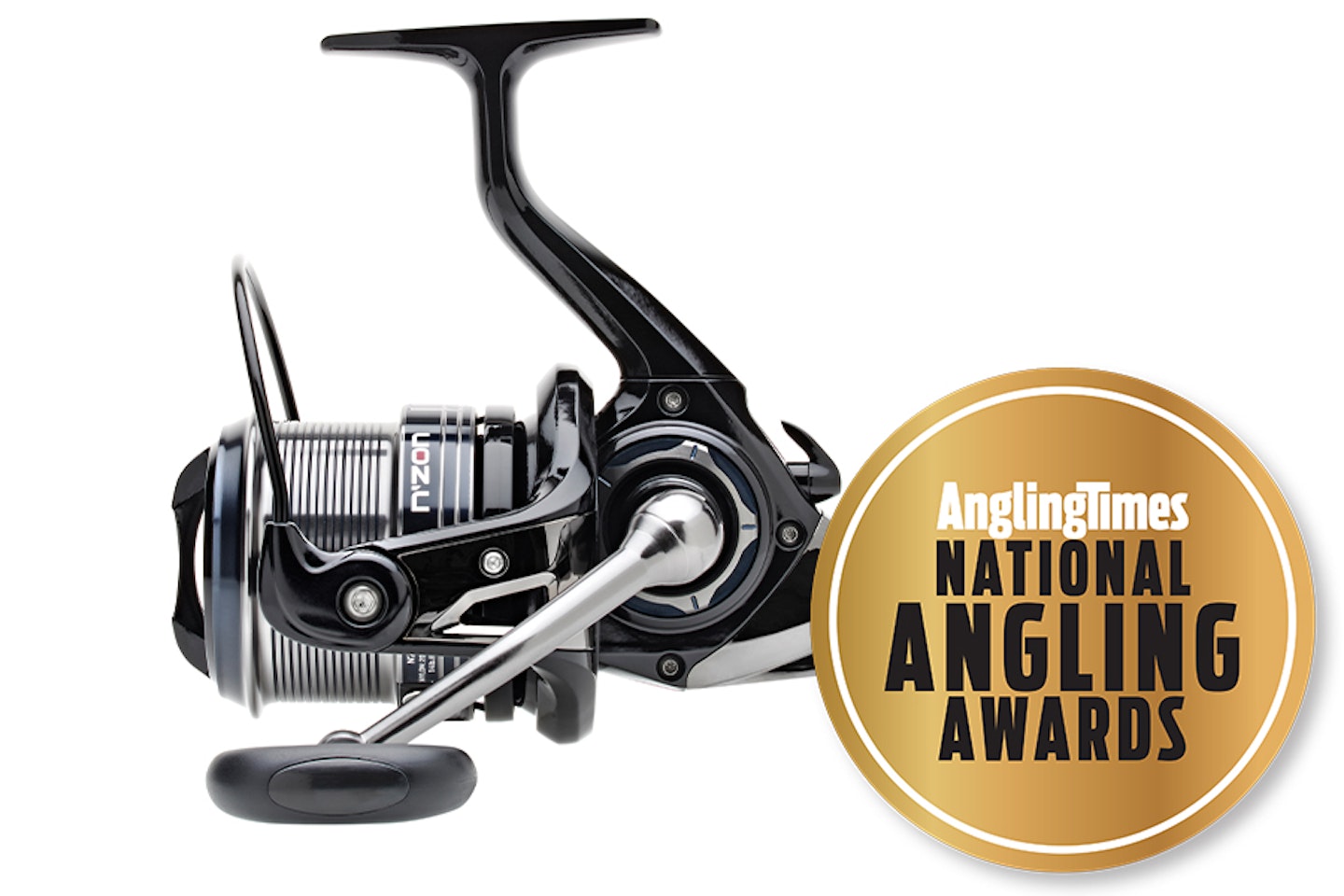
www.total-fishing-tackle.com
Featuring a 25mm spool, the N’ZON Distance 25 Feeder is perfect for both long range and powerful feeder work. Its geared down ratio of 4.6:1 ensures easier winding of heavy loads, but still cranks back 92cm per handle turn.
The shallow-profile aluminium spool will hold up to 150m of 0.28mm mono or 300m of 0.16mm braid, if required. Even with less line loaded, line release remains smooth. There are also twin line clips, allowing you to fix accurate distances to multiple spots you may be fishing.
Pros
- Shallow spool is perfect for braided mainline.
- Loads of cranking power.
Cons
- Not the fastest retrieval rate on the market.
What to look for in a Method Feeder fishing reel
Method Feeder fishing can be very demanding on your tackle, especially when the fish are feeding well, and you are constantly casting and retrieving your feeder. Generally, this style of angling requires a lot of accuracy, so the first thing to look for when deciding which is the best method feeder reel is a good quality line clip, as more often than not, you will require the use of it. A solid, metal or plastic line clip that you can easily slip the line under is perfect, you don't want one that is too tight as this can cause your mainline to damage as it hits it frequently.
Due to the strenuous nature of fishing the Method, and the generally large, hard fighting fish you'll be catching its always wise to choose a reel that has a quality gear system that will be able to cope with the pressure you'll be putting it under. A method feeder reel that has a good line lay will be a massive advantage in helping you cast any distance combined with a line roller that will stop the line twisting up when retrieving the feeder.
Lastly, if you're fishing for particularly big fish or like to take a more relaxed approach to your angling, it can be well worth getting a reel that has a baitrunner system. This type of reel engages a freespool option so even on the most savage of bites, the fish can take line and won't pull your rod and reel into the water. It is imperative, whatever type of reel you choose that it has a smooth drag as this will prevent breakages and hook pulls, making sure you land as many fish as possible.
Glossary
Drag/clutch: An adjustable tensioning system that allows a hard-fighting fish to pull an additional line from the reel instead of breaking the line.
Freespool: Similar to a clutch but working at far lower tensions, the Freespool will allow a running fish to take line, preventing a rod on a rest from being pulled in. Once the rod is picked up and the reel handle turned, it will disengage, putting the reel back into 'fish playing' mode with the drag working as normal.
Spool: The cylinder at the front of a reel which holds the line.
Big pit: A reel with a long spool designed for extreme long-range casting by reducing the resistance of the line.
Frap up: A tangle during a cast where a ball of line catches in the guides of the rod, typically causing a crack off.
Crack off: Named after the loud cracking sound made as line breaks during a cast.
Line clip: A small clip on the spool that line can be placed under, stopping it from leaving the reel. Originally designed to stop lines from falling off in transit, they are now commonly used to repeatedly cast a set distance.
Line Twist: Casting, retrieving and using the freespool and clutch adds twist to your line, which can weaken it and reduces casting distance. In extreme cases, the line will bounce off the spool and ball up as it untwists. More expensive reels incorporate various technologies to minimise line twists.
Frequently asked questions
What size reel should I use for feeder fishing?
A 3000 size suits rods of 10ft or less, whilst a 5000 or bigger will be needed on 13ft or 14ft rods designed for long distances. A 4000, however, is a great ‘go to’ size for all general mid-range feeder fishing. Be aware that sizes vary between manufacturers, so take a look or ask in a tackle shop before you buy.
How much line do I need on top of my backing line?
100m is plenty for most situations and allows you to discard some should it become damaged. 150m or more is the norm for long range feeder fishing. You should use a backing line too, if your chosen line doesn’t fill the spool.
How can I clean my reel?
A damp cloth and warm water should be enough. Although reels are designed to be as watertight as possible, keep their exposure minimal, as any that gets inside will rinse lubricants from the reel. An old toothbrush can be useful too.
How should I load a reel with line?
There are three methods.
1. Ask a second person to place a pencil through the hole of the spool and use a cloth to add friction to the spool to stop it spinning out of control whilst you wind it onto the reel.
2. Place the spool in a bucket of water and allow it to rotate whilst you wind it on. Beware, as getting it wrong will cause line twist.
3. Use a dedicated line loader.
Author Mark Sawyer holds the position of Tackle Editor at Angling Times, boasting more than thirty years of experience working within different fields of the angling industry.
